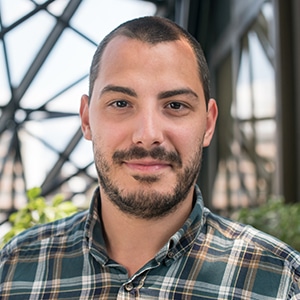
Aleksandar Kostadinov
Alexander Kostadinov currently holds a Senior Software Engineer position at Musala Soft’s team developing the smarthome platform for Deutsche Telekom – Qivicon. Being part of the team that is responsible for integrating new devices into the platform, through the last years he gained significant experience in working with numerous and various smart devices coming from renowned manufacturers. As an IoT enthusiast, he enjoys spending his spare time playing with connected devices and applying smart solutions to his own home.
Alexander graduated his bachelor’s and master’s degree from the Faculty of German Engineering Education and Business Management at the Technical University of Sofia. In 2017, Alexander held a session considering the ways to overcome the diversity of smart devices during the Innovations in Software Technologies and Automation (ISTA) conference in Sofia. In both 2016 and 2017, he also held lectures considering writing high-quality code during Musala Soft’s MUFFIN conference. Being a strong defender of quality code, he also held several public MUFFIN seminars on the topic.
Bug fixing in IoT: Tackling challenges during connected device Integration
Day by day, we are getting more and more excited about the ideas behind the Internet of Things – IoT always brings a picture of a fully-automated surrounding world where connected devices substitute us in many daily activities. It is a fact that our world has already become flooded by smart devices and, as a natural consequence of this fact, many companies are trying to conquer a bigger part of the market, offering the customers their own bespoke IoT platforms that integrate a large number of connected devices produced by renowned manufacturers. However, because there is no such standard accepted for the connected device APIs, as well as the means of device connectivity and communication are almost unlimited, the process of smart device integration turns out to be making the IoT platform providers face a great challenge – the lack of standardization and the various device communication methods, which results in many possibilities for bugs to sneak into the platform. So, the main question stands – how to prevent our smart device integration platform from bugs and make it safe enough?
In order to at least partially answer this outstanding question, being part of the team that is responsible for integrating new devices into a big leading IoT platform for 4 years now myself, I will share my experience how we managed to resolve a lot of issues related to connected device integration and what actions and adaptations our team had to undergo in order to improve the quality of our products. During the session, we are going to have a deeper look over the bugs we fixed in the last year in a statistical manner – what was their type, what components they affected, what time was needed to discover the cause and fix a given defect, what percent of them were real blockers, etc. Further ahead, we will take a look over what structural changes our team had to go through and what mistakes we could have easily avoided in advance. Finally, practical advice is going to be shared in order to clarify how to spot potential bugs and how to improve the quality of the connected device IoT platform we are developing.

